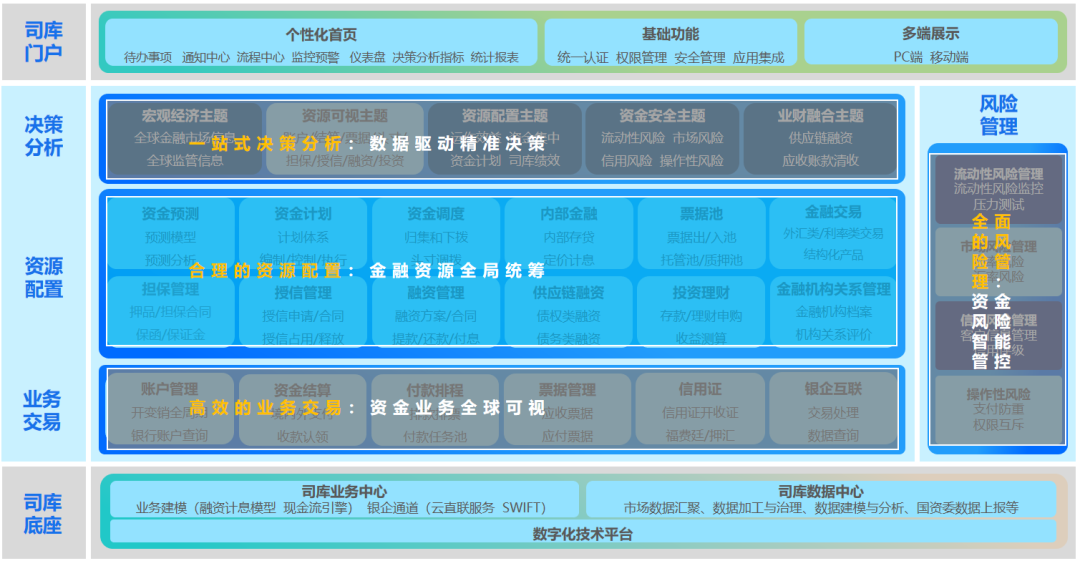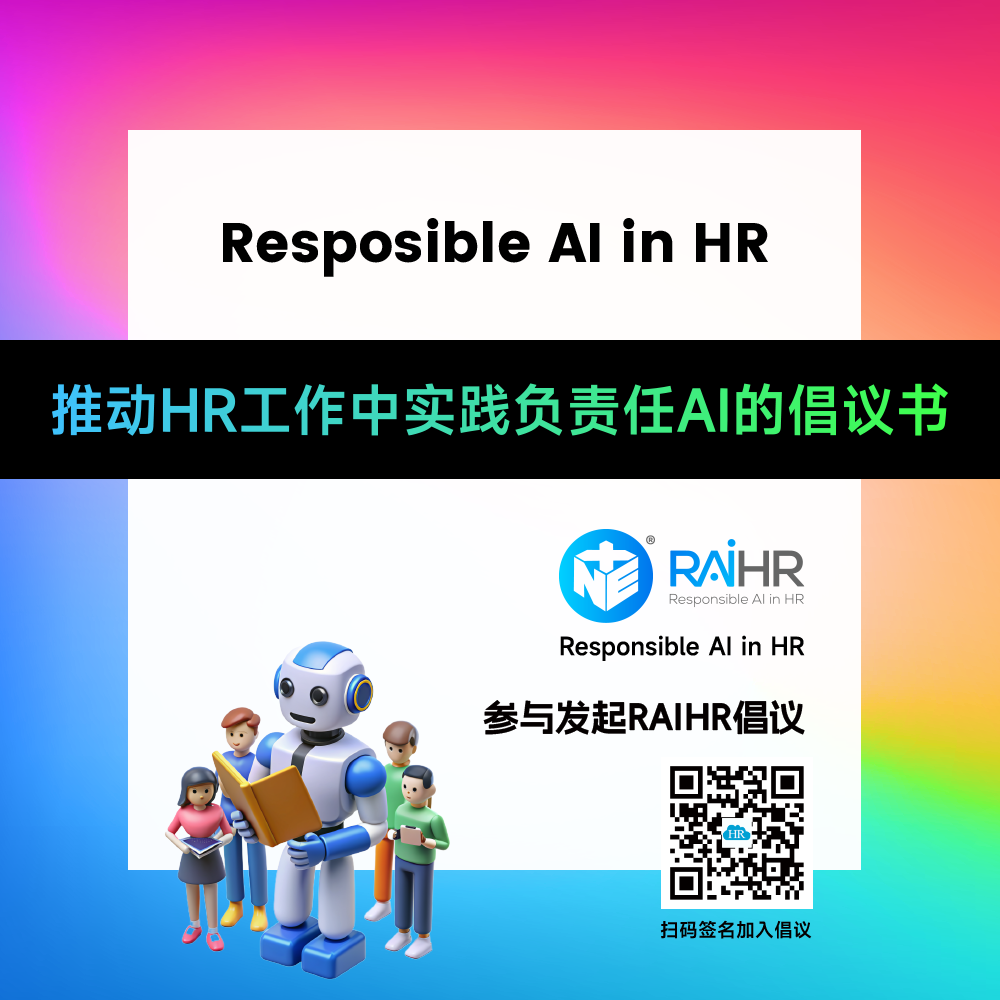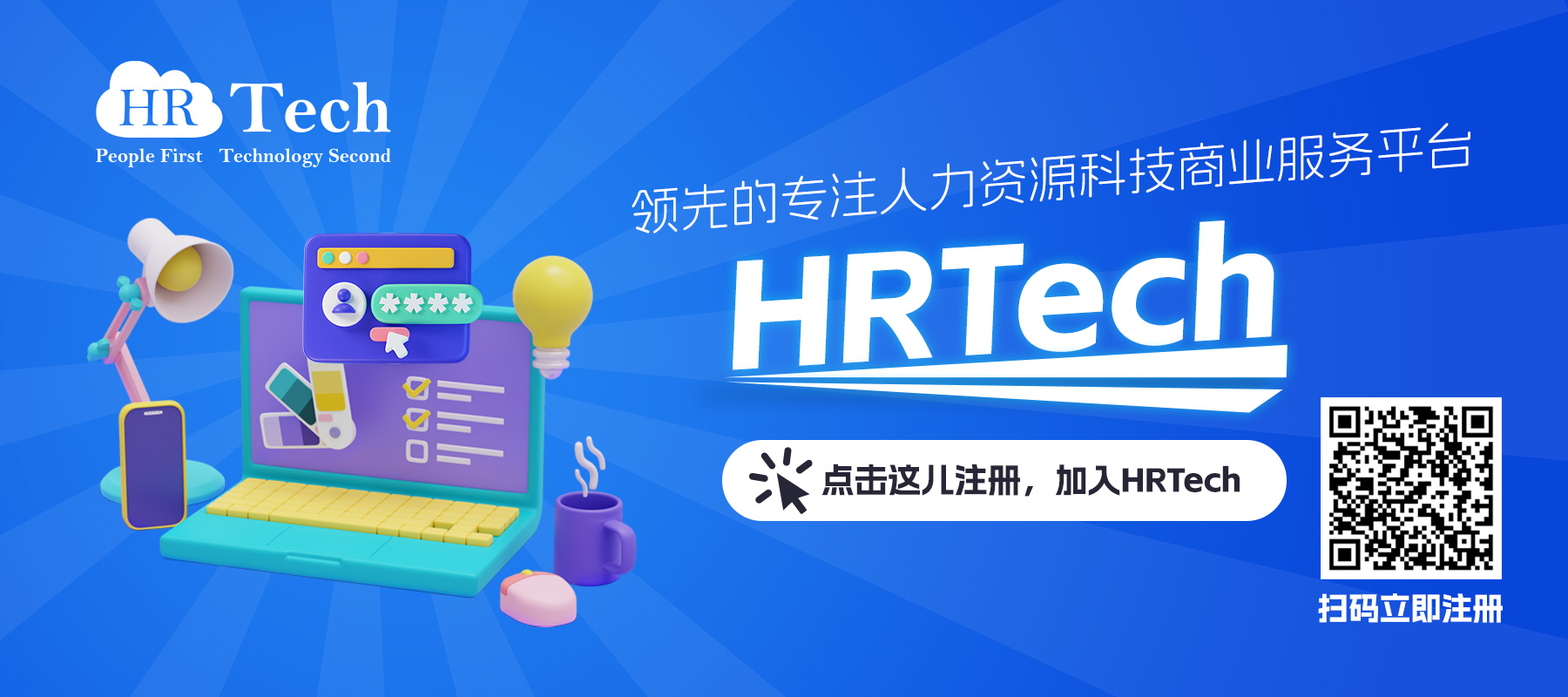资讯
【英国】人力风险管理平台CultureAI获得1000万美元A轮融资,旨在改进组织管理人力风险的方式
总部位于英国伦敦的人力风险管理平台 CultureAI 宣布已完成 1000 万美元的 A 轮融资。此次融资由Mercia Ventures和Smedvig Ventures联合领投,现有投资者Passion Capital和Senovo也将继续提供支持。
尽管许多公司多年来在意识和培训计划方面投入了大量资金,但据Forrester预测,2024年90%的数据泄露事件将涉及人为错误,因为不经常进行的安全培训并不能改变员工的行为。CultureAI 采用数据驱动的方法,通过创新的人力风险管理平台(Human Risk Management Platform)帮助企业监控、减少和修复人为网络风险,使企业能够识别劳动力安全风险、及时指导员工并自动修复。
继 2021 年和 2023 年分别获得 400 万美元和 500 万美元的种子轮投资后,CultureAI 的人力风险管理产品迅速得到采用,收入和客户显著增长,其中包括 Revolut、RAC、Wickes、Delivery Hero、ClearBank 和 Marie Curie。在 SaaS 应用程序、协作工具和生成式人工智能广泛应用的推动下,CultureAI 的网络风险检测和管理方式不断发展。
CultureAI 致力于建设一个不再因人为错误而导致安全漏洞的世界。为了实现这一愿景,公司将大力投资于产品的发展,并扩大所有部门的团队,力争在未来 12 个月内将员工人数翻一番。此外,公司还计划提高其在美国的市场地位和影响力。
CultureAI公司创始人兼首席执行官James Moore说:"想象一下,拥有一支数千人的团队,深入了解企业及其员工。如果这个团队能从源头上审查、了解并解决每个员工产生的风险,那么违规行为就能减少 80% 左右。虽然建立这样一个团队并不现实,但我们可以利用智能技术来模仿它的有效性。
“解决人为风险对网络安全至关重要。每天,每 4 名员工中就有 1 人在工作中制造网络风险,从在影子 SaaS 应用程序中重复使用密码,到与人工智能工具过度共享知识产权。我们都是人,都会犯错。然而,仅仅进行更多的安全意识培训并不能解决这个问题,我们无法训练出人类的错误。这就是为什么我们专注于创建一个平台,通过干预和提示来检测并自动修复所有的劳动力网络风险"。
Mercia Ventures 的投资人 Adam Lovell 评论说: “CultureAI走在了人力风险管理这一新兴领域发展的前沿。詹姆斯和他的团队对企业面临的挑战有着深刻的理解,他们开发出了一种全面的解决方案,可以确保企业免受各种网络威胁。我们相信,该公司有望实现突破性增长。这笔资金将帮助该公司进一步面向全球受众,并确立其市场领导者的地位。
Smedvig Ventures合伙人Joe Knowles补充道: “人们普遍认为,人为错误是网络攻击最普遍的载体,而无效的培训计划却无法有效地防止这种错误。应用于实时行为数据的高级分析为CISO控制人为网络风险提供了一种新方法。CultureAI正以其市场领先的软件开创这一先河,提供即时可见性和漏洞缓解。詹姆斯作为该领域的思想领袖享有极高的声誉,我们很高兴能与他和他的团队一起与Mercia Ventures合作。
半岛集团网络安全副总监Aaron Paddison谈到了CultureAI为其组织带来的价值: “我们认识到,在改善员工安全行为方面,一揽子培训的实际效果甚微,我们需要一个更有针对性的解决方案。在了解员工的行为方面,CultureAI 改变了我们的游戏规则。我们可以在风险发生时进行干预,而不是依赖于培训模块(人们会立即忘记)。
关于 CultureAI
创新的CultureAI人力风险管理平台使安全团队能够即时识别员工的网络安全风险,对员工进行即时指导,并自动进行修复。
CultureAI 认识到,我们都是人,每个人都可能犯错。因此,CultureAI 致力于建立一个不再因人为错误而导致安全漏洞的世界。CultureAI平台使企业能够实时测量员工行为,减少并修复人为网络风险,无论员工在何处工作,从电子邮件到即时通讯工具,再到SaaS应用程序。
CultureAI总部位于英国,在曼彻斯特和伦敦设有办事处,深受全球领先企业的信赖。
资讯
为什么人才招聘团队必须以正确的方式拥抱 AI,否则就有可能被抛在后面?
人工智能将如何影响各组织的职能部门,这是目前几乎所有议程的重中之重——招聘也不例外。
德勤(Deloitte)最近的一项研究表明,技术的发展是董事会预计会影响未来劳动力的第二大趋势。今年早些时候发布的《趋势报告》发现,近80%的人才招聘领导者希望以某种方式在招聘过程中实施人工智能,尽管很大一部分(45.2%)的人认为应该谨慎行事。
然而,正在发生变化的是,是否在招聘中使用人工智能的选择权正在迅速从组织手中夺走,因为候选人的期望和技术的发展意味着那些不接受它的人有可能被抛在后面。取而代之的是,现在的重点是如何合乎道德地整合人工智能,以提高效率和候选人体验。这不仅仅是为了跟上技术的步伐;这是关于在人才招聘方面设定新标准。
联合创始人兼首席战略官 Frank Wolf 这就是为什么我们进行了一项最近的研究, 招聘人员,以更清楚地了解从初创公司到财富 500 强公司(包括丰田和埃森哲等行业巨头)的组织的招聘经理如何接近这项技术,以及他们是什么在这样做时考虑。本文探讨了组织如何以合乎道德的方式有效地实施人工智能技术来改善其招聘流程。
该研究强调了一个重大转变——传统的招聘方法,特别是那些专注于通过标准化评估检验的资格和经验的方法,正在迅速过时。
这不仅仅是一种趋势,更是由人工智能的能力驱动的必要演变。
总部位于英国的招聘评估公司 Arctic Shores 的研究表明,人工智能语言模型 ChatGPT 在语言推理测试中的表现优于 98.8% 的候选人。这给我们在招聘领域提出了一个关键问题——如果人工智能可以在这些评估中表现出色,我们是否衡量了候选人的正确属性?
接受采访的人工智能和招聘专家强调,我们需要摆脱传统的技能评估,转而关注批判性思维、独立时间管理和协作等属性。这种变化不仅仅是为了跟上技术进步的步伐,而是为了确保我们确定候选人的素质,这些品质反映了他们在动态和复杂的工作环境中茁壮成长的潜力。
该研究最引人注目的方面之一是候选人的期望如何推动人工智能在招聘过程中的采用。今天的候选人,尤其是那些以前瞻性组织为目标的候选人,希望最好的公司能够利用最新的技术。因此,在招聘过程中不使用人工智能的公司可能会被视为过时和无关紧要。
对于公司来说,采用人工智能不仅是为了提高效率,而且是为了增强候选人体验并在吸引顶尖人才方面保持竞争优势,这是一个令人信服的论点。
当然,将人工智能纳入招聘实践会带来一系列挑战,包括对偏见、道德使用以及平衡人类判断与机器效率的担忧。Willo一直说,人工智能必须与人类的输入和监督相结合,它是一种增强人类能力的工具,而不是取代人类能力的工具。
展望未来,很明显,人工智能将在招聘中发挥越来越重要的作用——组织必须做的是以合乎道德和有效的方式驾驭这一新形势。目标是确保人工智能不仅可以改善招聘结果和流程效率,还可以增强整体候选人体验,这对雇主品牌至关重要。
通过重新定义我们对候选人的重视,并利用人工智能来改进招聘流程,我们可以建立更有效、高效和面向未来的组织。随着我们继续探索和实施这些进展,正如我们研究的专家所证明的那样,这是一个处于人才招聘前沿的激动人心的时刻。
对于是否在招聘过程中使用人工智能,组织可能已经失去了选择权,但如何实施人工智能的控制权仍然掌握在他们手中。最好的组织将接受这种能力,并将其与人工主导的输入结合使用,以产生最佳结果。世界上最大的公司已经在关注这一点,最大的组织去哪里,其他组织就会跟到哪里。
为了帮助招聘经理和人才招聘团队应对与实施 AI 相关的挑战,他们应考虑以下几点:
定义明确的目标:确定您打算利用 AI 实现的目标。无论是提高效率、减少偏见,还是增强候选人体验,拥有明确的目标都将指导实施过程。
选择正确的工具:并非所有的 AI 工具都是一样的。选择符合您的目标并具有良好成功记录的解决方案。
培训您的团队:确保您的人才招聘团队精通使用 AI 工具并了解其含义。培训对于合乎道德和有效的使用至关重要。
试点和迭代:从试点程序开始,在受控环境中测试 AI 工具。使用获得的见解进行必要的调整。
监控和评估:持续监控 AI 工具的性能,并评估它们对招聘流程的影响。准备好根据需要进行更改。
确保透明度和合规性:在招聘过程中保持候选人对人工智能使用情况的透明度,并确保遵守相关法规和道德标准。
关于HRTech
HRTech 领先的专注人力资源科技商业服务平台,作为HR领域唯一深度垂直独立的第三方专业服务机构,致力于推动人力资源科技进步与发展,持续引领行业新科技新趋势新产品新方向。HRTech核心报道HR科技创新企业与产品,关注并实时分享全球的人力资源科技资讯。定期发布行业市值榜单和HR科技云图,持续举办高品质的专业前沿峰会论坛,表彰认可业内先进。
资讯
【德国】教育技术提供商Sdui收购教育平台FoxEducation并获得2100万欧元融资
总部位于科布伦茨的 Sdui 集团是欧洲教育技术提供商之一,该集团收购了教育平台 FoxEducation 及其旗下品牌 SchoolFox、KidsFox 和 TeamFox。Fox Education Services GmbH 之前隶属于世界领先的家教提供商和教育平台 GoStudent。
与此同时,Sdui 还从投资者那里获得了 2100 万欧元。Summiteer 和 HV Capital 主导了新一轮融资,并得到了包括 Haniel、Brighteye、Michael Hinderer 和 HTGF 在内的新老投资者的广泛支持。加上第一轮融资(A 轮)的 2500 万欧元,这家教育技术供应商共筹集了 4600 万欧元。公司将把其中的部分资金用于收购 FoxEducation。
通过收购 FoxEducation,Sdui 集团打算将自己打造成德语国家学校和日托中心通信和信息领域的市场领先教育技术提供商。该公司凭借广泛的产品组合活跃于 DACH 市场的所有三个国家。收购 FoxEducation 后,Sdui 集团为全欧洲 22,000 家教育机构的客户群提供服务。
与 Sdui 类似,FoxEducation 也提供创新解决方案,以改善教师、教育工作者、学生和家长之间的沟通。未来,Sdui 和 FoxEducation 将结合各自的专长,进一步改进产品。两家公司都希望这将带来更强劲的增长。FoxEducation 已经成功实现了三年的增长:该教育平台于 2021 年 9 月被 GoStudent 收购,并在该公司的管理下增长了 70% 以上。
虽然 FoxEducation 的增长代表了 GoStudent 的重大成就,但 FoxEducation 的能力发展方向与 GoStudent 的核心业务个性化辅导不同。因此,与更广泛的业务组合相比,GoStudent 与 FoxEducation 的直接协同效应较小: TusMedia、Seneca 和 Studienkreis。FoxEducation 决心利用技术推动教育发展,将其出售给 Sdui 集团是一项战略性举措,旨在改善学校、家长和学生之间的沟通,加强 DACH 地区的教育技术生态系统。
“Sdui 集团创始人兼首席执行官 Daniel Zacharias 说:"收购 FoxEducation 是一项重要的战略举措,大大加强了 Sdui 集团在 DACH 地区的影响力。Sdui集团创始人兼首席执行官Daniel Zacharias说:"凭借不断增长的全面产品,这次令人兴奋的收购将使Sdui能够更好地为德语地区的教育机构提供服务,并巩固我们作为欧洲教育机构最大的数字化合作伙伴的地位。我们总共筹集到的 4600 万欧元也将使我们能够继续投资于领先的教育技术"。
“FoxEducation联席首席执行官Philipp Fendt补充说:"Sdui集团收购FoxEducation对我们的客户来说是一次重大胜利。
“我们期待着联手进一步改善学校和日托中心的日常生活。我们共同的专业知识将为创新教育解决方案奠定更坚实的基础。这种合作关系将确保我们的客户获得满足其教育需求的最佳工具。通过整合我们的资源,我们将提供比以往更全面、更有效的解决方案,使学生、教师和家长共同受益。
“将 FoxEducation 出售给 Sdui 集团是一项重要的战略举措,旨在加强 FoxEducation 的价值和相关性,符合我们通过技术改善教育的目标。GoStudent 联合创始人兼首席执行官 Felix Ohswald 表示:"我们为在 FoxEducation 取得的成就感到自豪,并期待看到该公司在 Sdui 的领导下如何发展。“展望未来,我们将继续专注于通过技术释放学生的潜能。此次出售使我们能够专注于更快地发展我们的人工智能教室,该教室在2024年已经支持了600多万节课。”
Sdui 集团计划利用新资金进一步投资其平台,使学校和托儿所的日常生活更加轻松。
关于Sdui集团
自2018年在科布伦茨成立以来,Sdui集团已发展成为欧洲发展最快的教育技术公司之一。作为可靠的合作伙伴,这家教育技术供应商通过为数字化学校和日托中心开发创新操作系统,为教育机构、供应商和政府部门的数字化提供支持。
该平台的目的是利用智能功能将教师、教育工作者、家长和儿童联系起来。Sdui 集团的解决方案减少了所需的行政工作量,从而腾出时间来完成机构的主要任务:提供最好的教育。为此,Sdui 集团提供符合 GDPR 标准的解决方案,包括聊天、翻译功能、云、班级登记或人工智能课程计划等功能,这些功能都是专门针对学校和日托中心的需求量身定制的。
Sdui 集团还包括行政和管理平台 PUPIL 以及学习和成绩管理产品 Additio。公司总部位于科布伦茨,现有员工约 230 人。公司业务遍及 70 多个国家。在收购 FoxEducation 之后,目前共有约 22,000 家教育机构使用 Sdui 集团的产品。
关于FoxEducation
FoxEducation 于 2016 年在维也纳成立,提供数字解决方案,以简化教育部门的沟通和管理任务。除了面向学校的 SchoolFox 应用程序外,公司后来还推出了面向托儿所和幼儿园的 KidsFox 平台以及面向协会的 TeamFox。如今,达赫地区已有 9000 多家机构使用 FoxApps。2021 年夏天,FoxEducation 成为奥地利 GoStudent 公司的一部分,自此以后,FoxEducation 的应用程序(包括创新的支付管理工具 FoxPay)一直在不断发展。2024 年 7 月,FoxEducation 成为 Sdui 集团的一部分。(状态:2024 年 7 月)
关于 GoStudent
GoStudent 是全球领先的辅导供应商和教育平台之一。公司由 Felix Ohswald(首席执行官)和 Gregor Müller(首席运营官)于 2016 年在维也纳创立,目前已从 Prosus、Left Lane Capital 和软银愿景基金 2 等投资者处获得超过 6.75 亿欧元的投资。GoStudent 坚信教育的未来是混合型的,并通过收购 Seneca Learning、Tus Media 和线下辅导提供商 Studienkreis 扩大了其服务范围。这些公司旨在将线上和线下教育的优势结合起来,发掘每个孩子的潜能。GoStudent 的整个产品组合每月为 1,000 万个家庭提供支持。
资讯
【美国】客户入职平台OnRamp获得1420万美元融资,以实现B2B客户入职自动化
OnRamp 是一家通过自动化和简化售后流程提供无缝客户入职服务的公司,公司宣布已在种子轮和最近的 A 轮融资中筹集了 1420 万美元。Javelin Venture Partners 领投了 A 轮融资,Contour Venture Partners 领投了种子轮融资。加入这些公司的还有 Pear VC、Quiet Capital、Correlation Ventures、Frontier Ventures、J Ventures 等公司,以及包括 Claire Hughes Johnson(Stripe)、Steve Fredette(Toast)和 Louis Beryl(Four Cities Capital)在内的战略人士。
OnRamp 公司的主要企业客户已包括《财富》杂志 15 强中的三家。这笔资金将用于增强该产品领先的自动化和用户友好功能,帮助解决引导 B2B 客户顺利完成最复杂的售后流程,同时无缝路由企业数据的难题。
“我们看到了 OnRamp 的巨大潜力,它可以解决市场机会不足的问题。客户入职流程的颠覆时机已经成熟,OnRamp 正在通过自动化和用户友好功能改变这一流程。通过缩短冗长的入职时间、提高客户参与度和可见性,OnRamp 帮助企业加速实现价值、降低成本并保护收入。Javelin Venture Partners 董事总经理 Noah Doyle 表示:"这笔资金将帮助 OnRamp 建立一支世界一流的销售和营销团队。
OnRamp公司由首席执行官Paul Holder和首席运营官Ross Lerner于2020年创立,在过去的三年中,公司每年的收入都增长两倍,今年的收入有望再次增长两倍。OnRamp 帮助客户加快了数百万美元的收入确认速度,同时允许入职团队在人数持平的情况下扩大业务范围。使用 OnRamp,客户的入职速度提高了 70%。
“OnRamp联合创始人兼首席执行官Paul Holder说:"入职和创造良好的第一印象是客户生命周期中最关键的环节。“在高增长公司领导入职和客户成功团队的 10 年时间里,我亲眼目睹了目前可用的工具是多么有限,无法推动积极的互动。市场早就需要像 OnRamp 这样的解决方案。通过与我们出色的团队合作,我们现在已经实现了这一愿景。
客户入职是各种规模的企业所面临的最具挑战性的收入障碍之一。无数企业因为入职流程太慢或崩溃而无法确认收入。OnRamp 突破了这些瓶颈,同时为客户提供了更高的体验,极大地提高了客户满意度。
例如,ParkHub 正在利用 OnRamp 的无代码客户门户帮助实现复杂工作流程的自动化,同时保持大规模运营效率。“有了 OnRamp,我们的入职团队从签署协议到启动新客户所需的时间大大缩短,"百汇客户成功主管Lance Walton说。“随着我们规模的扩大,这些进步和标准化程度的提高对我们的业务产生了重大影响"。
有了OnRamp,公司就能创造非凡的第一印象,促进长期的客户成功。如需预订 OnRamp 演示,请访问:https://onramp.us/demo。
关于OnRamp
OnRamp是领先的客户入职平台,致力于帮助B2B公司加速收入增长。通过自动化和简化售后流程,OnRamp 确保新客户能够轻松驾驭最复杂的入职流程,提高他们的整体体验和满意度。OnRamp 深受包括三家财富 15 强企业在内的行业领先企业的信赖,它帮助企业优化入职战略,从第一天起就推动企业取得成功。
资讯
人才管理系统在多元化、公平和包容倡议中的作用
在当今全球化和相互关联的世界中,多样性、公平性和包容性(DEI)已成为组织成功的关键要素。企业越来越认识到多元化员工队伍、公平实践和包容性文化在推动创新、提高绩效和员工满意度方面的价值。人才管理系统在这些多元化、包容和创新(DEI)举措中发挥着举足轻重的作用,它提供先进的工具和分析方法来衡量、监控和提升多元化、包容和创新(DEI)的成果。
了解人才管理系统
人才管理系统是一种集成软件平台,旨在管理人力资源的各个方面,包括招聘、入职、绩效管理、学习与发展、继任规划和薪酬。人才管理系统可帮助企业简化人力资源流程,提高数据准确性,并通过高级分析提供战略洞察力。
人才管理系统的关键组成部分
招聘和入职: 人才管理系统通过自动化职位发布、候选人跟踪和入职程序来促进招聘流程,确保新员工顺利入职。
绩效管理: 人才管理系统通过目标设定、绩效考核和反馈机制实现持续的绩效监控。
学习与发展: 人才管理系统通过提供培训计划、电子学习模块和职业发展规划,支持员工发展。
继任规划: 人才管理系统有助于在组织内部识别和培养未来的领导者。
薪酬管理: 人才管理系统通过数据驱动的薪资基准和激励规划,确保公平公正的薪酬做法。
将 “多元化、平等、包容 ”纳入人才管理系统
将多样性、公平性和包容性(DEI)融入人才管理系统(Talent Management System),对于旨在营造更具包容性、公平性和多样性的工作场所的组织而言,是一项至关重要的战略。这种整合可确保多元化、包容性和包容原则不仅仅是理论上的,而是积极融入人才管理的方方面面,从招聘和入职,到绩效管理和继任规划。
确定 DEI 目标和衡量标准
将 DEI 纳入人才管理系统的第一步是制定明确的 DEI 目标和衡量标准。这些目标和指标应与组织的总体使命、价值观和战略目标相一致。例如,目标可能包括增加领导职位中代表性不足群体的代表性、实现薪酬公平或提高整个员工队伍的文化胜任能力。衡量标准应具体、可衡量、可实现、相关、有时限(SMART),为跟踪进展和问责提供明确的框架。
审计现有的人才管理系统,以促进融合 DEI
对现有的人才管理系统进行一次彻底的审计,对于找出差距和机会以整合 DEI 至关重要。这包括审查当前的招聘做法、绩效评估、培训计划和继任规划流程,以确保它们促进多样性和包容性,并且没有偏见。审计还应评估人才管理系统界面对所有员工(包括残疾员工)的无障碍性。
在招聘工作中纳入 “残疾人平等参与 ”标准
招聘是融合 DEI 能够产生重大影响的一个基本领域。人才管理系统可促进盲人招聘流程,去除申请表中的身份信息,从而减少无意识的偏见。应审查和制定职位说明和标准,以吸引多样化的候选人。此外,利用人才管理系统的分析功能,组织可以跟踪申请人库的多样性,并确定招聘过程中可能出现偏见的阶段,从而进行有针对性的干预。
加强绩效管理
将 DEI 纳入绩效管理系统对于确保所有员工享有平等的表彰和晋升机会至关重要。应将德育目标纳入绩效评估,鼓励管理人员考虑员工如何为包容性工作场所做出贡献。反馈机制的设计应公平、公正,并对管理人员进行培训,使其认识到在绩效考核中如何减少偏见。
促进包容性学习与发展
人才管理系统应支持包容性学习与发展计划,以满足员工的不同需求。这包括提供有关 DEI 主题的培训,如无意识偏见、文化能力和包容性领导力。确保包括残疾员工在内的所有员工都能获得学习资源也至关重要。人才管理系统可以跟踪这些计划的参与情况和成果,帮助评估其影响并确定需要改进的地方。
实施公平的继任规划
接班人计划应从 DEI 的角度出发,确保多元化人才拥有平等的领导力发展机会。人才管理系统可帮助识别来自代表性不足群体的高潜力员工,并为他们提供量身定制的发展计划。导师和赞助计划也可纳入人才管理系统,以支持多元化员工的职业发展。
确保薪酬公平
人才管理系统中的薪酬管理应透明、公平。企业可以利用人才管理系统分析进行薪酬公平审计,发现并解决任何差异。向所有员工有效传达清晰一致的薪酬政策有助于建立信任并确保公平。
利用人才管理系统衡量发展指数成果
衡量 DEI 成果对于了解 DEI 计划的有效性以及做出以数据为导向的改进决策至关重要。人才管理系统为跟踪和分析整个组织的 DEI 指标提供了一个强大的框架。
关键的 DEI 指标
多样性指标: 这些指标包括性别、种族、民族、年龄、残疾和其他相关类别的人口统计数据。人才管理系统可以跟踪从初级职位到高管职位的不同组织级别的多样性。
公平指标: 这些指标侧重于薪酬公平、晋升率和获得发展机会的机会。人才管理系统可以发现差距,并帮助组织实施纠正措施。
包容性指标: 通过员工参与度调查、反馈机制和保留率来衡量包容性。人才管理系统可以分析这些数据,评估组织文化的包容性。
衡量 DEI 的工具和技术
仪表盘和分析: 人才管理系统仪表盘可实时洞察员工发展指数指标,使人力资源专业人员能够监控进展情况并识别趋势。
调查和反馈工具: 人才管理系统可促进定期开展员工调查,以收集有关包容性的反馈意见,并确定需要改进的领域。
基准和报告: 人才管理系统允许组织根据行业标准来衡量其 DEI 表现,并生成全面的利益相关者报告。
利用人才管理系统提升多元化、平等和包容成果
要提高多元化、公平和包容(DEI)成果,就必须采取全面的战略方法,将 DEI 原则融入组织运营的方方面面。以下是有效提高多元化、平等与包容成果的几项关键策略:
数据驱动决策
利用数据分析对于确定发展融合的差距和衡量进展情况至关重要。各组织应利用人才管理系统(Talent Management System)来收集、分析和解释有关多元化指标的数据,如代表性、薪酬公平性、晋升率和员工参与度等。这种以数据为导向的方法使组织能够确定需要改进的具体领域,并据此调整干预措施。定期更新和审查多元化发展指标可确保各项战略保持相关性和有效性。
持续监测和评估
应持续监测和评估 DEI 措施,以评估其影响和效果。这包括建立定期反馈机制和进行定期 DEI 审计。纳入人才管理系统的员工调查和反馈工具可以深入了解工作场所的文化和组织的包容性。通过不断评估发展型企业倡议,组织可以调整和完善其战略,以更好地实现其发展型企业目标。
员工参与和培训
让员工参与 DEI 工作对于创建真正的全纳工作场所至关重要。持续开展 “全纳工作 ”培训计划有助于提高员工对无意识偏见、文化胜任力和全纳行为的认识。所有员工,尤其是担任领导和管理职位的员工,都必须参加这些培训计划,以确保整个组织都能理解并践行 “全员参与 ”原则。此外,促进有关 DEI 问题的公开对话,鼓励员工资源小组(ERGs),也能进一步促进参与和包容。
培养全纳型领导
培养全纳型领导是持续开展 DEI 工作的关键。各组织应注重发现和培养担任领导职务的多元化人才。这可以通过有针对性的继任规划、指导和赞助计划来实现。包容性领导力培训应强调多元化视角的重要性,并教导领导者如何营造包容性环境,让所有员工都能感受到自己的价值,听到自己的声音。通过建立包容性领导人才梯队,各组织可以确保对 “促进可持续发展的企业教育 ”的长期承诺。
透明的沟通
透明地沟通 DEI 的目标、进展和挑战,对于在组织内部建立信任和问责至关重要。定期向员工通报有关发展型企业倡议的最新情况并分享成功案例,可以激励员工继续努力并参与其中。清晰的沟通还包括坦诚地指出组织在哪些方面存在不足,并概述解决这些问题的具体步骤。这种透明性可以培养一种信任文化,并使员工对 DEI 的成果承担集体责任。
公平的人才管理实践
确保从招聘到薪酬等所有人才管理实践的公平性,是提高发展融合成果的基础。各组织应实施公正的招聘流程、公平的绩效评估和公平的薪酬政策。人才管理系统可以帮助识别和解决这些过程中可能存在的偏见,确保所有员工享有平等的晋升和表彰机会。公平的人才管理实践不仅能促进公平,还能提高员工的满意度和留任率。
社区和合作伙伴参与
与外部社区接触,并与促进 DEI 的组织建立伙伴关系,也能增强 DEI 的成果。与不同的专业网络、教育机构和注重可持续发展教育的组织合作,可以获得不同的人才库和新的视角。这些伙伴关系还可以为组织内的 DEI 计划提供额外的资源和支持。
人才管理系统在 DEI 行动中的未来
随着技术和分析技术的进步,人才管理系统在 “促进可持续发展的教育 ”计划中的应用前景广阔,为提高 “促进可持续发展的教育 ”的成果提供了新的机遇。
新兴趋势
人工智能和机器学习: AI 和 ML 可以帮助识别招聘和绩效评估中的无意识偏见,提供更客观的见解。
预测分析: 人才管理系统可以利用预测分析来预测人才发展指数趋势,并在潜在挑战出现之前加以识别。
增强员工体验: 未来的人才管理系统将专注于创造个性化的员工体验,以促进包容性和参与度。
与其他系统集成: 将人才管理系统与其他组织系统(如 CRM、ERP)整合,可提供有关 DEI 及其对业务绩效影响的整体视图。
挑战与机遇
数据隐私与道德: 随着人才管理系统收集更多数据,确保数据隐私和合乎道德地使用数据至关重要。
可扩展性: 在大型全球性组织中实施人才管理系统来实施 DEI 计划可能很复杂,需要可扩展的解决方案。
持续改进: 各组织必须致力于不断改进和适应其 DEI 工作,以跟上不断变化的社会期望。
人才管理系统对于推进组织内的多元化、公平和包容举措至关重要。通过将多元化、平等和包容纳入人才管理系统,衡量多元化、平等和包容的成果,并利用人才管理系统来提高这些成果,组织可以创建更加多元化、平等和包容的工作场所。案例研究和最佳实践证明了人才管理系统对促进平等和包容工作的积极影响,强调了领导承诺、员工参与和透明报告的重要性。
资讯
【柏林】绝缘材料行业初创公司VARM获得570万欧元种子轮融资,用于弥合隔热工作方面的技能差距
绝缘材料行业的先锋初创公司 VARM 宣布已获得 570 万欧元的种子基金,由 Emerge 和 Pale Blue Dot 领投,noa(原 A/O)、Foundamental 和之前的天使投资人也提供了额外支持。这笔投资将极大地推动 VARM 通过革新保温材料行业实现欧洲脱碳的使命。
VARM 于 2023 年由连续创始人 Christian Gruener 和 Sebastian Wuerz 创立,并迅速成为隔热行业的领导者,其工作重点是缩小阻碍大规模隔热工作的技能差距。通过培训新的安装人员并将他们与业主联系起来,VARM 的目标是在全欧洲大幅减少碳足迹并提高能源效率。本轮融资将使 VARM 能够扩大其 “云安装工 ”计划,提供全面的盒中业务解决方案,使工人能够有效地启动和扩大他们的隔热服务,同时解决欧洲工匠行业的技能缺口问题,该行业目前已经缺乏 300 万名熟练工人。
在 VARM 最初开展业务的德国,仅取暖一项就占二氧化碳排放量的近五分之一。在整个欧盟,四分之三的建筑物被认为能效低下,而建筑行业造成的能源相关排放超过三分之一。对单户住宅进行专业的隔热处理可节省多达 50% 的能源消耗,但每年仅有 1% 的建筑进行翻新,以提高能效。
“未来 10 年,我们必须改造高排放建筑,提高其能效。最有效的方法是隔热,而不是热泵或太阳能,"VARM 联合创始人兼首席执行官 Christian Gruener 说。“这就是我们建立可扩展的隔热基础设施的原因。这笔资金将帮助我们扩展和创新,使隔热材料更容易获得,让每个人都能负担得起。
VARM 的平价隔热方法满足了节能建筑的关键需求,这对实现欧洲的气候目标至关重要,同时也考虑到了全球经济不稳定时期家庭预算有限的问题。通过将当地的独立绝缘工人队伍与其绝缘技术相结合,VARM 旨在推动绝缘技术的未来发展。VARM 目前的重点是气隙隔热材料(也称为空心墙或吹入式隔热材料),不仅能提高隔热效果,还能减少安装时间和成本,使其成为对业主和企业更具吸引力的选择。
Pale Blue Dot 的合伙人 Heidi Lindvall 补充说:"我们相信,VARM 解决隔热技术差距的创新方法将对减少全欧洲的家庭排放产生巨大影响。他们的愿景与我们支持初创企业应对气候变化的使命完全一致。
Emerge 公司合伙人Mario Barosevcic评论说: “培训新的安装人员不仅能满足对熟练工人的即时需求,还能通过机会的民主化提供长期的职业前景。我们很高兴能支持克里斯蒂安和塞巴斯蒂安创造一个更加可持续的未来。
资讯
人才咨询公司Sinecure收购招聘服务公司Strategy Source,巩固整体人才解决方案的市场地位
以技术为动力的人才咨询公司Sinecure宣布收购招聘服务公司Strategy Source,以加强其作为唯一一家将人工智能的力量与经验丰富的顾问的个人魅力相结合的人才公司的独特市场地位。通过此次收购,Strategy Source凭借其在非C级招聘、招聘流程外包(RPO)和应急服务方面的专长,为Sinecure的服务带来了新的能力。此外,Strategy Source专注于中高级管理职位,与Sinecure现有的高管寻聘业务高度互补。
“Sinecure首席执行官Joel Wright表示:"我们的愿景是用世界上最优秀的人才为世界上业绩最好的公司加油助力,收购Strategy Source是我们实现这一愿景之路上的下一个里程碑。“将扩展的服务水平与人工智能和大型语言模型(LLM)系统相结合,加强了我们的搜索、咨询和顾问资源,确保我们的客户能够获得全面的人才解决方案,满足他们的需求,应对人才战略各个方面的挑战。
“Strategy Source首席执行官Laura Lasiter表示:"与Sinecure的合作使我们能够利用其创新的人工智能解决方案和全球影响力,提高我们满足客户复杂需求和期望的能力。“我们在技术、媒体和营销服务领域的专业知识为我们提供了新的客户接触点。我们致力于实现 Sinecure 的愿景,建立一个全面的解决方案,为人才行业的人才招聘设立新的标准。
Sinecure的客户、精品猎头公司Ventikos Associates的创始人兼负责人Christa Ventikos补充说:"我很荣幸能与战略资源公司的Laura Lasiter合作,Sinecure认识到她和她的团队带来的巨大价值也就不足为奇了。她接着说:"此举证明了Strategy Source的杰出贡献和领导能力,现在有了Sinecure的技术和支持,我相信他们将在新的篇章中取得更大的成就,推动更多的成功。
战略资源公司将隶属于新近成立的部门Sinecure Recruitment Services,由Lasiter女士担任执行副总裁。新集团将继续专注于现有的服务和领域,同时还将通过产品创新和定制来实现服务的多样化。除了他们的专业知识,战略资源团队还带来了另一份客户名单,其中包括The Trade Desk、Dotdash Meredith、Magnite、the Interactive Advertising Bureau、VideoAmp和Quantcast,以及几家独立代理公司和主要的代理控股公司。
Sinecure 收购 Strategy Source 标志着该公司今年在招聘服务领域的第二次战略收购,第一次收购是 Grace Blue,一家专门从事领导力和 C 端人才的全球猎头公司。这两项收购对于表明 Sinecure 致力于创建以人工智能软件为基础的高度个性化服务为特色的独特模式至关重要。交易的财务条款未披露。
关于 Sinecure
Sinecure 是一家为那些深知人才是竞争优势的领导者提供突破性人才服务的公司。我们的控股公司独一无二,通过全资拥有的全套产品和服务,将人工智能的力量与值得信赖的顾问的关怀和洞察力相结合,提供全面的人才解决方案。这包括我们的人工智能技术平台 Sinecure.ai,以及招聘服务公司 Grace Blue 和 Strategy Source。我们在全球拥有超过75家客户和合作伙伴,他们信任Sinecure,相信Sinecure能为他们带来与众不同的技术机遇,同时在他们投资于最重要的资产--人才时,Sinecure能确保他们获得真实世界的体验。
关于Strategy Source
Strategy Source是一家招聘服务公司,对 “人才空间 ”有着深刻的理解,擅长提供量身定制的结果,以适应不断变化的组织需求和行业动态。自2005年以来,战略资源公司一直以定制搜索解决方案和填补人才缺口的战略方法而闻名,帮助企业实现指数级扩张和文化调整。
资讯
【美国】人才招聘和学习体验平台Making Space获得200万美元种子轮融资,用于扩展面向残疾工人的招聘学习平台
为企业培训、获取和留住通过资格预审的残疾人才提供服务的 B2B SaaS 人才获取和学习平台 Making Space宣布成功完成了 200 万美元的超额预种子轮融资。本轮融资由 Beta Boom 领投,JFFVentures、FullCircle、American Student Assistance (ASA)、ECMC Foundation、SmartJob、Mindshift Capital、Techstars 和其他知名投资人跟投。
公司首席执行官是第二次创业的 Keely Cat-Wells。她的第一家公司于 2022 年被 Whalar 收购,是创意产业中对残疾人才的最大投资之一。Cat-Wells 和 Sophie Morgan 创办 “ Making Space”和 “ Making Space Media ”的原因是,她们作为残疾人工作者,在残疾后一直在努力寻找无障碍的教育和就业途径。
Making Space "通过将针对特定工作的无障碍教育嵌入人才招聘流程,弥补了这一差距。这种方法可以释放生产力,为企业客户提供快速的投资回报和明确的投资回报率,同时为残疾工人提供更多获得更高质量工作的机会和竞争优势。Making Space 的软件将影响与基本业务指标联系起来,如缩短招聘时间、提高员工保留率和改善员工绩效,成为雇主招聘和学习基础设施不可或缺的一部分。“Making Space 正在抓住一个巨大的劳动力套利机会,解锁一个以前未曾开发的、有才华且通过资格预审的新人才库。显然,这不仅仅是一个潜在的短暂举措"。FullCircle 创始人兼执行合伙人 Virginie Raphael 指出。
残疾人(包括慢性病患者、神经分裂症患者和精神残疾者)失业的可能性是普通人的两倍,只有 49% 的残疾人学生能从四年制大学毕业,而非残疾人学生的这一比例为 68%。此外,61% 的残疾员工不会在工作中透露自己的残疾状况,这主要是因为他们担心歧视和偏见会导致高离职率、职业发展停滞不前以及宝贵人才的大量流失。为了解决这个问题,Making Space 开发了 “指南针”(Compass),这是候选人档案中的一个人工智能工具,可以将残疾人士的生活经历转化为可转移的技能和个性化的职业发展途径。该功能目前处于测试阶段,将在未来几个月内公开发布。创造一个让所有员工都能茁壮成长的温馨、公平的工作环境,是 Make Space 在最初的招聘楔子之外的核心愿景。
这轮种子轮融资获得了大量关注,并超过了原定目标,这是一个重要的里程碑,尤其是考虑到残疾人创业者获得风险投资的可能性要低 400 倍。
“在 Beta Boom,我们喜欢支持那些表现出超人毅力和韧性的创始人。Make Space 正在缩小被忽视的人才与世界级机遇之间的差距,而这仅仅是个开始。- Sergio Paluch,Beta Boom 管理合伙人
在成立的第一年里,Making Space 已经为 1800 多名残疾人提供了免费的无障碍教育。虽然该公司与行业无关,但其著名的合作伙伴包括世界上最大的两家媒体公司:
Netflix 合作伙伴: Making Space "与 Netflix 合作,提供针对特定工作的教育,对残疾人平面设计师进行资格预审,并建立了残疾人平面设计师培训管道。
NBC 体育合作: Making Space "与美国全国广播公司体育频道(NBC Sports)合作,在即将到来的巴黎奥运会和残奥会转播期间,为残疾人人才提供更多镜头前后的就业机会。此次合作包括为 NBC 的残奥会报道聘请有史以来第一位残疾人主持人。
“NBC 体育频道残奥会监督制片人 Alexa Pritting 说:"在报道巴黎奥运会之前,我们与 Making Space 的合作已经证明是有益的。“我们迫不及待地期待着残奥会开幕后我们将继续开展的大量工作,并努力提高残疾人在体育界和其他领域的代表性。
关于Making Space
Making Space 是一个人才招聘和学习体验平台,为企业培训、获取和留住通过资格预审的残疾人才提供服务。Making Space为人才寻访、职业晋升和流动提供基于技能的无障碍学习,提高生产力,为雇主带来明确的投资回报。他们的模式改善了招聘时间、招聘质量、保留率和员工绩效等关键指标。Making Space 是一家 Techstars 公司,曾在 ASU+GSV 举行的首届 WGU Labs Pitch 竞赛中获胜,并在 Pepperdine 大学的 Most Fundable Companies 竞赛中获得金奖。Making Space 是 Making Space Media 的总部,Making Space Media 是一个以残疾人的声音为中心制作电影、电视、教育和宣传内容的品牌。Making Space Media 与里斯-威瑟斯彭斯(Reese Witherspoons)签订了《你好,阳光》(Hello Sunshine)的首映协议。
资讯
【德国】面向一线工人的培训软件doinstruct获得760万欧元融资,用于解决一线工人技能短缺问题
面向一线工人的领先培训软件 doinstruct 宣布已在 Creandum 领投的一轮融资中获得 760 万欧元,以应对关键行业每年数百万人在入职培训不足的情况下开始新工作的挑战。
这家德国初创公司建立了一个移动优先的入职和培训平台,将无办公桌工人的实际需求放在首位。该平台无需下载应用程序,无需记住密码,也无需电子邮件。所有培训内容都与监管机构和认证机构合作不断更新,目前有超过 16 种语言可供选择。
对于雇主而言,该平台提供无限制使用的培训包和高度自动化,允许他们将培训设置为 "自动驾驶",以便在需要时自动重复,实现持续学习。他们还可以录制和上传自己的内容。通过仪表板,他们可以轻松跟踪和报告培训合规情况。平均而言,doinstruct 的客户在第一个月的采用率就超过了 90%,每位员工节省了 4.6 个小时的工作时间,培训成本降低了约 43%。
doinstruct 成立于 2021 年,由 Charlotte Rothert、Daniel Marinkovic、Thorsten Groß 和 Mona Feder 领导。公司已在食品、物流和建筑领域取得了巨大的发展,拥有 170 多家客户,其中包括 Voelkel、Wiesenhof、Hengstenberg 和 Echterhoff 等欧洲知名品牌。Doinstruct 将利用这笔资金加快产品规模,扩大国际业务,并进入新的垂直领域。
doinstruct 首席执行官兼联合创始人Charlotte Rothert说: "我们的客户正面临着越来越多的挑战。他们受到日益严格的监管要求和劳动力短缺的影响。轮班工人很难接触到,语言障碍导致几乎不可能进行合规的培训和信息传递,不可避免的员工流动需要持续、耗时的再培训。我知道我们可以做得更好。很显然,工人和工业企业应该得到更好的待遇"。
根据今年早些时候的一项研究,在 21 个欧洲国家中,四分之三的雇主在 2023 年找不到具备适当技能的工人。历史上较低的失业率加上出生率的下降,正在造成就业缺口,而移民是填补食品加工等关键和高度管制行业这一缺口的关键。
迄今为止,一线工人在很大程度上得不到技术服务,他们大多接受非母语培训、面授培训或使用电子学习解决方案,而这些解决方案在开发时并未考虑到这些工人的需求。这对雇主来说成本高昂,而且往往难以跟踪合规情况,在食品加工等对卫生标准要求极高的行业或危险的工作环境中会造成严重后果。
Creandum 的普通合伙人 Simon Schmincke 补充说:"全球有超过 27 亿一线工人被当前的培训方案所遗忘。Doinstruct针对这些工人的需求开发了一款令人难以置信、易于使用的产品,他们的客户非常喜欢这款产品。随着他们在垂直领域和国际上的扩张,我们看到了他们的巨大潜力。
关于Doinstruct
Doinstruct 是一家基于数字技术的公司,其视频功能专为行业人员入职和培训而设计。利用该公司的平台,企业可以通过智能手机、供应链和任何地方对其员工和服务提供商进行培训,让所有一线人员都能方便地参与培训。
资讯
【美国】建筑安全软件公司HammerTech获得7000万美元融资,以实现全球建筑工地安全和效率的现代化
总部位于澳大利亚墨尔本和加利福尼亚州门洛帕克的建筑安全软件公司 HammerTech 获得了 7000 万美元的成长型融资。本轮融资由 Riverwood Capital 领投。
这笔新资金将刺激公司发展,加快研发速度。这包括将人工智能和其他技术整合到 HammerTech 的安全智能软件平台中,该平台面向总承包商,深受全球 100 多万工人的信赖。
"HammerTech 首席执行官兼联合创始人Ben Leach表示:"这是我们发展过程中的关键时刻,最终将惠及我们的客户和整个行业。"我们将继续专注于通过更智能的工作流程进一步提高效率,保持我们在建筑技术领域的领先地位,最终使建筑工地更加安全。
"建筑工地工作仍然是世界上最危险的工作之一,其工伤死亡人数在所有行业中最高。可悲的是,这些改变生命的事件中有许多是可以避免的。
"随着项目变得越来越复杂,技术必须超越表格的数字化。我们需要让工地团队的日常流程和活动变得更简单,这样他们就可以专注于安全工作,做他们最擅长的事情--建筑。"
除了财务投资,Riverwood 还带来了在全球范围内发展和扩大技术公司规模的专业知识,为 HammerTech 继续其雄心勃勃的扩张战略提供指导。"Riverwood Capital 联合创始人兼执行合伙人 Jeff Parks 表示:"HammerTech 为全球最先进的建筑公司提供安全计划。"Ben 和他的团队建立了一个令人难以置信的企业,其核心是为利益相关者提供价值,而这个行业传统上缺乏变革性技术。
"我们非常高兴能与这样一个具有远见卓识的团队合作,帮助他们实现下一阶段的增长,为新的市场和客户带来急需的企业级安全智能软件。
"我们认为,HammerTech 是实现作业现场安全现代化和自动化的关键解决方案。"从总承包商到专业承包商再到资产所有者,HammerTech 提供的价值正在推动有形的投资回报率,同时使作业现场成为更安全的工作场所,"Riverwood Capital 合伙人 Ramesh Venugopal 说。
"其精心设计的入职和指导、安全检查、事故报告和作业现场合规平台给我们留下了深刻印象,该平台具有清晰的审计跟踪回溯功能。
HammerTech 成立于 2013 年,取得了令人瞩目的发展。它现在为全球 500 多家客户提供服务,其中包括营业额达数十亿美元的承包巨头。这些客户包括 Shawmut Design and Construction、DPR Construction 以及澳大利亚 Hutchinson 和欧洲承包商 John Paul Construction 等市场领导者。
迄今为止,HammerTech 已被用于全球 20,000 多个建筑项目,通过该平台入职的工人超过 360 万。
成长型股权投资公司 Arrowroot Capital 在 2019 年投资总部位于墨尔本的 HammerTech 公司后,仍将是 HammerTech 的股东。除 Arrowroot Capital 外,Riverwood Capital 也将加入 HammerTech 董事会。
Lightning Partners担任HammerTech此次交易的财务顾问。
关于 HammerTech
HammerTech 的安全智能软件平台专为建筑业而设计,旨在提高工人安全和解决工地效率难题。HammerTech 于 2013 年推出,其广度、深刻的洞察力和专业知识得到了包括 Hutchinson、DPR Construction、Shawmut Design and Construction 和 John Paul Construction 在内的建筑业最佳承包商领导的 20,000 多个项目的信赖,使他们的工地成为世界上最安全的工地之一。
关于 Riverwood Capital
Riverwood Capital 投资于技术和技术驱动行业的高增长公司。Riverwood 向通常需要增长资本和专业技术以在全球范围内扩大规模的被投资公司提供运营、战略、技术和财务洞察力的独特组合。该公司寻求投资于拥有成熟技术和商业模式,并在文化和价值观方面契合的企业。Riverwood 成立于 2008 年,自成立以来已投资和支持了 80 多家公司。公司在加利福尼亚州门洛帕克、佛罗里达州迈阿密、纽约州纽约市和巴西圣保罗设有办事处。
扫一扫 加微信
hrtechchina
 资讯
资讯
 资讯
资讯
 资讯
资讯
 资讯
资讯
 资讯
资讯
 资讯
资讯
 资讯
资讯
 资讯
资讯
 资讯
资讯
 资讯
资讯





 扫一扫 加微信
hrtechchina
扫一扫 加微信
hrtechchina




